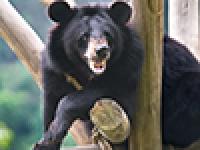With animal performance cruelty continuing globally, might the new Dumbo movie fuel demand?
28 March 2019, 16:31PM

The Dumbo movie may well have an animal welfare message, but in malls around the world that message is stripped away and we’re left with elephants dressed up for entertainment.
Visitors to Hong Kong’s Times Square mall this month are being greeted with a quite shocking sight – imagery I thought society was moving away from.
A cute baby elephant in circus attire hangs from the ceiling, a delighted smile on his face as he performs. A short distance away, the little elephant stands on a circus stool, his face beaming with pride as he looks out toward the audience.
Having campaigned for years against the cruelty of animal performance – having seen the scars, chains and wounds – I find this imagery completely misleading.
No wild animal willingly performs unnatural tricks for human audiences. Circus animals endure lives of extreme suffering and their plight continues
Animals Asia’s investigations into animal performance facilities in Asia have found elephants remain a mainstay of shows. They continue to be poached from the wild, trained through violence and kept in utterly unsuitable conditions which cause long-term psychological trauma.
But in Times Square mall, none of this is present. Instead there is a cute, baby elephant, happy to be performing in a circus for humans.
It takes a while to realise, but this display is actually a marketing gimmick for Disney’s new Dumbo movie.
Early reviews suggest the new film contains a pro-animal welfare message. That may be the case, but in malls across the world, the allegory is missing. All we have instead is misleading images of animal performance and life-size models for children to stand beside for photographs.
If animal performance had been consigned to the dustbin of history, that might be acceptable. But in an era where elephants, bears, macaques, orangutans, dolphins and a great many other species continue to be held in conditions which cause great physical and psychological suffering for our entertainment, it is sending entirely the wrong message.

How many families, inspired by similar Dumbo displays, will go on to visit an animal circus? How many will seek to have their picture taken beside real-life elephant calves? How many will pay to ride the “real-life Dumbo”?
There are thousands of “real-life Dumbos” in Asia working in circuses, giving rides to tourists and hauling logs. Their lives have no relation to the life of the happy Dumbo shown in malls and likely too to be recreated in a range of toys and other products.
Instead, their lives are remarkably similar to that of Jumbo, the real-life elephant whose story inspired Dumbo way back in the 1940s.
Jumbo wasn’t bred in the circus. Like most circus elephants, he was poached from the wild, his mother killed in front of him because she would never allow her calf to be taken without a fight. Following his capture, Jumbo endured a miserable existence in captivity - giving rides, eating sticky buns, drinking whisky and suffering from debilitating health problems – before dying young.
That level of abuse is characteristic of the animal performance industry today. That cruelty is still the norm.
Jumbo’s horrific story continues to repeat and that is why we cannot be complacent about the end of the industry.
My concern is that even if Disney has the best intentions, by setting their story in the world of animal performance, they may end up fuelling demand for cruelty to continue."
Recent Posts
June 05, 2024
A soothing balm for humans – a life-saving change for bears.
March 30, 2024
February 08, 2024




